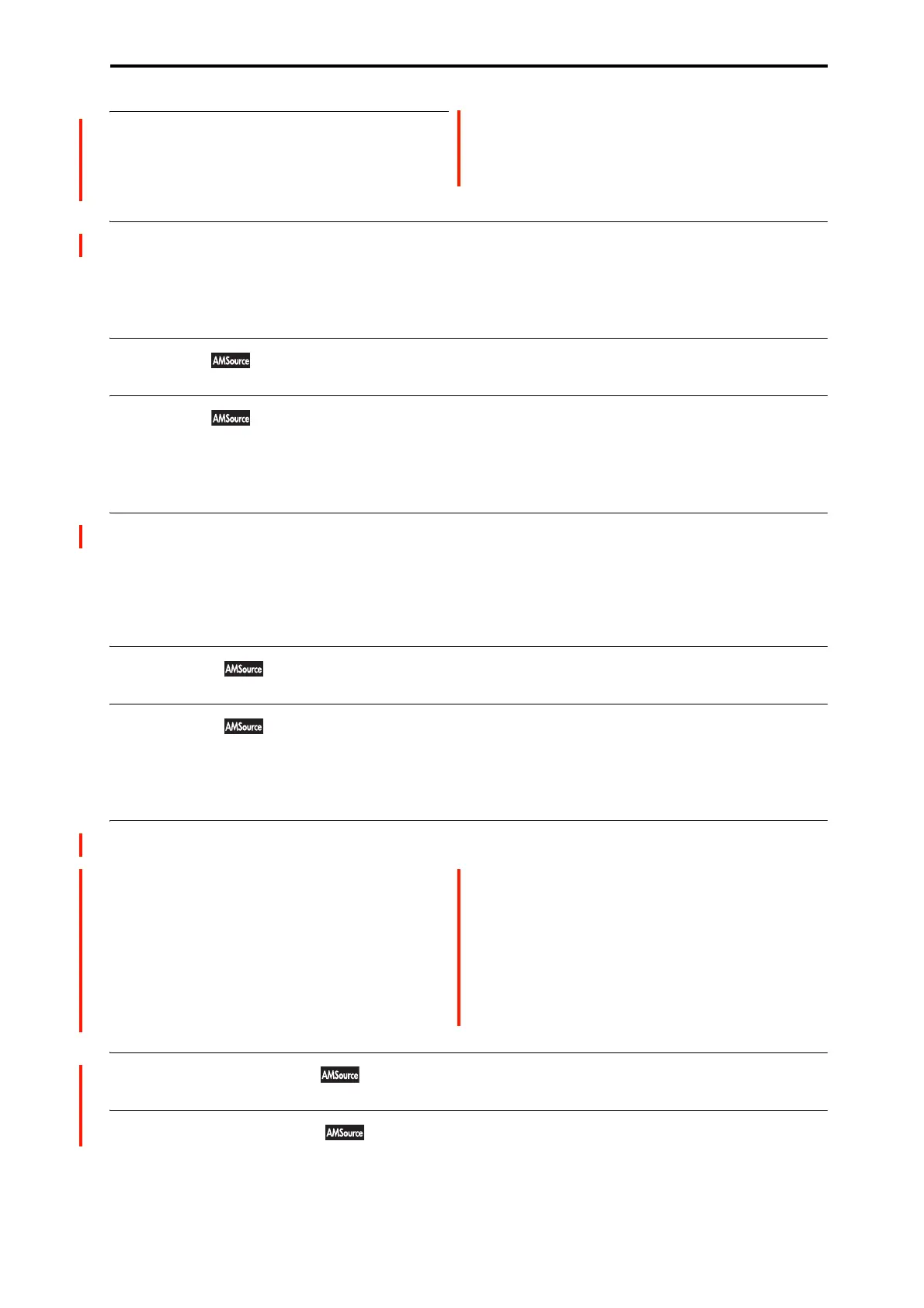PROGRAM > PolysixEX: Modulation & Arpeggiator 7–1: EG 2
293
v
5–1: Page Menu Commands
• Compare →p.112
• Write Program →p.112
• Exclusive Solo →p.113
•PAGE →p.126
•MODE →p.126
PROGRAM > PolysixEX: EG
The PolysixEX has two assignable EGs, in addition to the
original EG. Each of these can be used as an AMS
modulation source to control a wide variety of parameters.
7–1: EG 2
7–2: EG 3
The PolysixEX’s EGs 2 and 3 are identical to the AL-1’s
EG1. For detailed explanations, please see “7–1: EG 1
(Filter),” on page 169.
PROGRAM > PolysixEX: LFO
The PolysixEX has two assignable LFOs, in addition to the
original Polysix MG and the EXi Program’s Common LFO.
Each of these can be used as an AMS modulation source to
control a wide variety of parameters.
8–1: LFO 1
8–2: LFO 2
The PolysixEX’s LFOs 1 and 2 are identical to those of the
AL-1. For detailed explanations, please see “8–2: LFO 1,”
on page 175.
PROGRAM > PolysixEX: AMS Mixers
The AMS mixer lets you combine two AMS sources into
one, or process an AMS source to make it into something
new.
For instance, you can multiply two AMS sources, or use a
single AMS source to change the source settings of another
source. You can also change the LFOs and EGs in varied
ways, or control the response of the real-time controls.
The AMS mixer outputs appear in the list of AMS sources,
just as with the LFOs and EGs.
This also means that the AMS configured with the AMS
mixer input can itself be reused as an AMS. For instance, if
you use LFO1 as an input for an AMS mixer, you can use the
processed version of the LFO signal to control one AMS
modulation, and the original version of the LFO signal to
control another AMS modulation.
AMS mixers can also be used in cascading sequence. For
example, you can use AMS Mixer 1 as the input for AMS
Mixer 2.
9–1: AMS Mixers 1/2
9–2: AMS Mixers 3/4
The PolysixEX’s AMS Mixers are identical to those of the
AL-1 (although the PolysixEX has four, to the AL-1’s two).
For detailed explanations, please see “9–1: AMS Mixer,” on
page 179.

